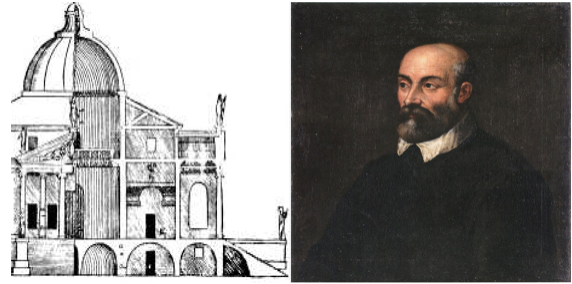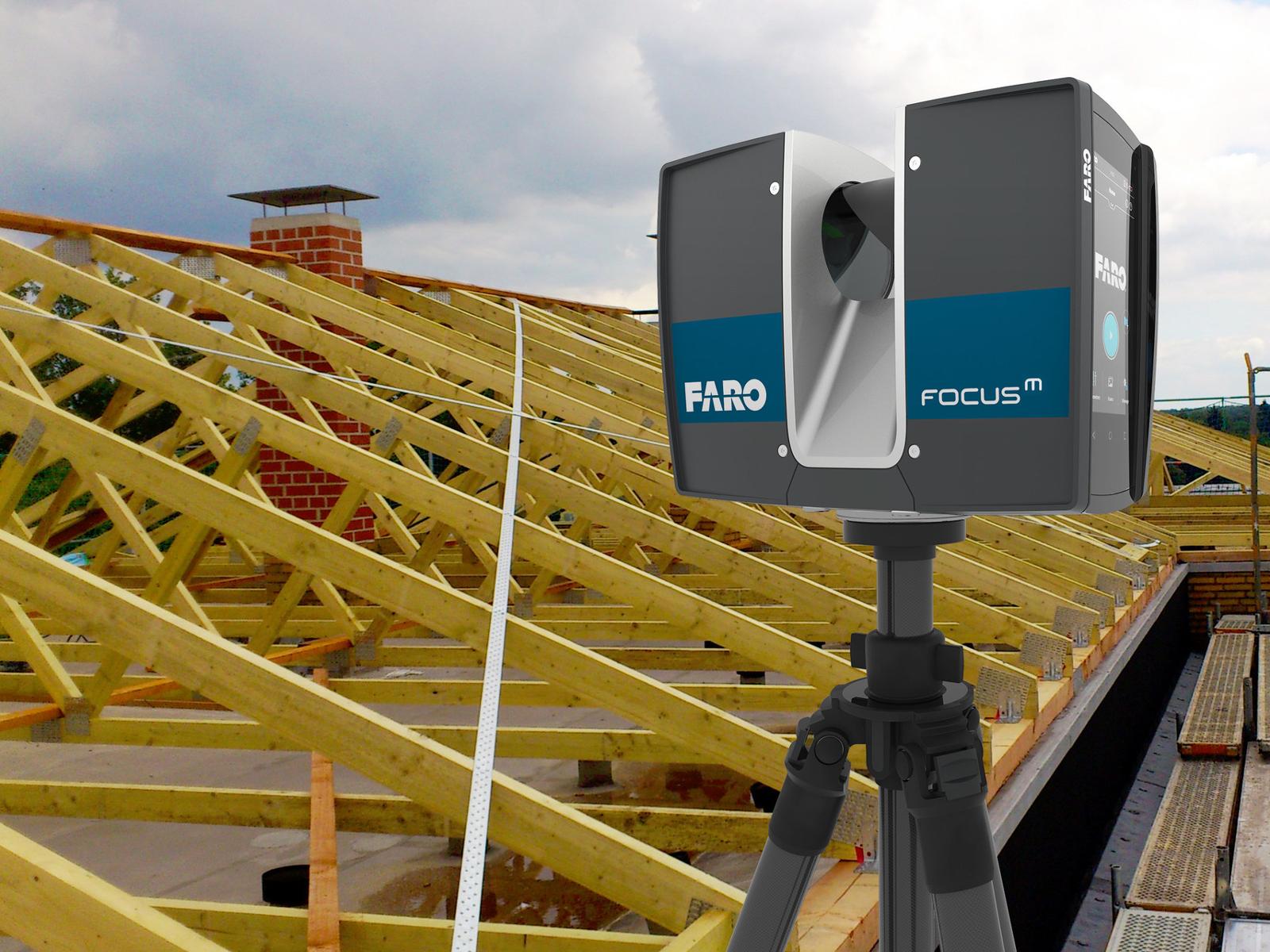
About Jefferson Palladio What is 3D Scanning?
About This Project
Unlimited Dimensions: Digital Analysis of Jefferson and Palladio's Architecture uses 3D laser scanning technology to examine a selection of architectural works by Thomas Jefferson and Andrea Palladio. Our digital tools take on particular significance in the context of Jefferson, for the use of these tools underscores the value that Jefferson placed on Enlightenment thought and data collection. Jefferson adapted Palladian architecture as a means through which to express Enlightenment ideals of truth, reason, and learning, and as a symbol of democracy. Jefferson's only published book, Notes on the State of Virginia, exemplifies the practice of data collection. The digital technologies implemented in this project are an extension of Jefferson's original Enlightenment goals and serve as a continuation of his data collection endeavors.
Laser scanning functions as a contemporary approach to data collection, capturing billions of points of data with a precision unachievable and unimaginable in Jefferson’s time. By studying buildings with minute precision, we draw closer to Jefferson’s ideals and achieve a more complete understanding of the authority of nature and the power of reason.

Thomas Jefferson (1743-1826)
 Thomas Jefferson was an American founding father, politician, and intellectual who was fascinated by Enlightenment ideals of science, human rights, and democracy. He was the author of the Declaration of Independence and the Virginia Statute for Religious Freedom and the founder of the University of Virginia. As an amateur architect, Jefferson brought classical European architecture to the United States to bring enlightenment ideals to American citizens.
Thomas Jefferson was an American founding father, politician, and intellectual who was fascinated by Enlightenment ideals of science, human rights, and democracy. He was the author of the Declaration of Independence and the Virginia Statute for Religious Freedom and the founder of the University of Virginia. As an amateur architect, Jefferson brought classical European architecture to the United States to bring enlightenment ideals to American citizens.
Andrea Palladio (1508-1580)
 Andrea Palladio was the most notable Italian Renaissance architect. He designed monumental public buildings, private homes, and villas inspired by the buildings of classical Greece and Rome. He published his drawings and analysis of classical architecture in his iconic treatise, I Quattro Libri dell'Architettura (The Four Books of Architecture), which became one of the most influential and widely published architectural books of all time.
Andrea Palladio was the most notable Italian Renaissance architect. He designed monumental public buildings, private homes, and villas inspired by the buildings of classical Greece and Rome. He published his drawings and analysis of classical architecture in his iconic treatise, I Quattro Libri dell'Architettura (The Four Books of Architecture), which became one of the most influential and widely published architectural books of all time.
Jefferson owned several copies of Palladio’s I Quattro Libri dell'Architettura and considered it his Bible for beautiful and correct architecture, loaning copies to workmen as they worked on the University of Virginia’s Academical Village. He modeled his first design for his Monticello home after Palladio’s Villa Cornaro. He proposed a design for the President’s House in Washington, DC, based on Palladio’s Villa Rotonda, the first nonreligious building with a domed roof. Jefferson subsequently included domes in his extensive renovation of Monticello, his Poplar Forest retreat, and most notably, in the University of Virginia’s Rotunda, inspired by Palladio’s drawings of the Pantheon in Rome.
What is 3D Scanning?
Thomas Jefferson understood Andrea Palladio as a data-collector; a man who had traveled the classical world observing, documenting, and reinterpreting Roman architecture for an Enlightened Italy. Jefferson employed the elements of Palladian classicism in his own architecture to create a uniquely American architectural style that symbolically defined virtue, beauty, and democracy to the people. With digital 3D data, we are able to break architecture free of the two dimensional world of books and photographs, sharing Jefferson and Palladio's ideals with the world.

3D Scanning refers to a group of technologies that allow for the exact digital capture of an object's geometry. Laser Scanning uses a tripod-mounted or handheld device to emit beams that measure distance from their source to an object's surface, billions of times, until the resultant data can accurately describe the entire surface of the object being scanned. Other methods employ measurements of light patterns or extrapolation from a series of digital photos. 3D Scanning of cultural resources such as buildings, museum archives, and other historical artifacts indefinitely preserves their physical characteristics, and presents the opportunity to immortalize and democratize the knowledge embodied in their physicality.
Thomas Jefferson and Andrea Palladio in the Digital Age

As a segment of the field of digital humanities, digital architectural history has provided both architectural historians and the wider public with new means through which to understand the history of architecture. Mapping, information visualization, virtual modeling, simulation, and database creation (among other technological tools) are not simply ways to access information digitally, but provide architectural historians with new tools for analyzing the built environment.
Digital tools have provided this research with the advantage of comparative context. Through data collection, these tools have allowed for each site to be examined with unparalleled specificity within the context of the other sites. These objects do not exist in isolation; rather, they have been created and exist within a broader context. Therefore, data collection enhances the study of each site by representing each structure within the vast history of the Palladian-Jeffersonian legacy. Modern digital tools provide new ways through which to examine, archive, and interpret architectural history. Using laser scanners, students and faculty collected data at each of the sites before registering and processing the data using FaroSCENE and GeoMagic software. Once registered, this data can be used to produce a wide range of outputs such as CAD models, 3D printed objects, and Virtual Reality experiences.

